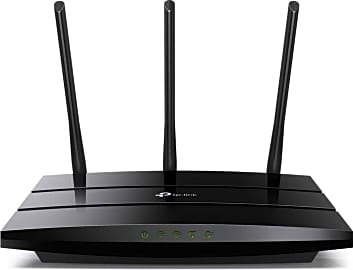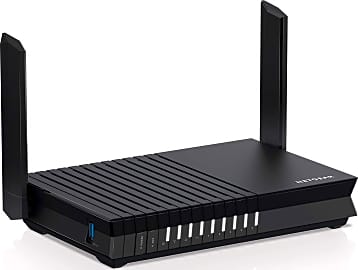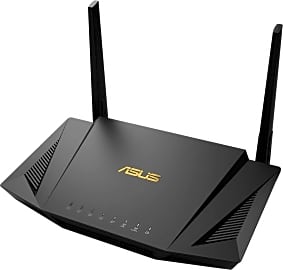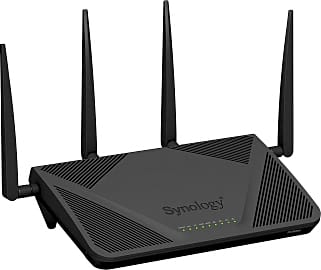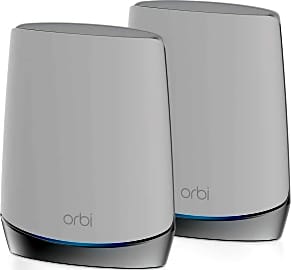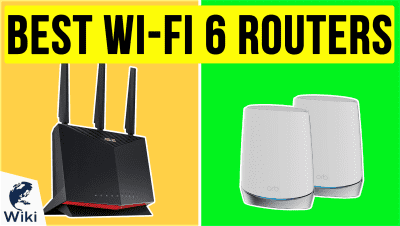The 10 Best Wireless Routers

This wiki has been updated 32 times since it was first published in December of 2018. Cord cutting, 4K streaming, and gigabit Internet are now fully in the mainstream, and to take advantage of them, you will need a relatively high-quality Internet connection, but you won't necessarily need the most expensive hardware available. It will help to have a reliable router that receives any necessary firmware updates, like these, many of which will remain useful for years to come. When users buy our independently chosen editorial choices, we may earn commissions to help fund the Wiki.
Editor's Notes
August 20, 2020:
It takes about 25 megabits per second worth of bandwidth to stream a 4K movie on Netflix, so it's likely that your Internet connection will be more of a bottleneck than your router. Nonetheless, it's important to make good selection, and the newest models, as well as those that get frequent firmware updates, will make the best choices. The TP-Link Archer AX50 is a great option in terms of performance as well as modernity, thanks to its reasonable cost and Wi-Fi 6 support. The Netgear RAX15 is very similar in terms of price-to-performance ratio. The Asus RT-AX56AU and Amazon Eero are two others with 802.11ax compatibility. It should be noted that Wi-Fi 6 support is a worthwhile technology moving forward because it essentially takes MU-MIMO to the next step and greatly increases efficiency when multiple Wi-Fi 6 devices are connected.
That said, many users won't really be able to take advantage of Wi-Fi 6 for a year or two, so advanced 802.11ac models like the TP-Link Archer A8 will work just fine. The Synology RT2600ac is another at a similar price point, while the Asus RT-AX56AU is a high-bandwidth option that costs considerably more but offers impressive levels of throughput.
If you're looking for ease of setup, there are some mesh-oriented options that are both high-performing and extremely convenient. The Google Nest WiFi is at the top of the list as far as ease of use, while the Gryphon Guardian offers in-depth parental and security controls. If you're aiming for peak performance, though, it's tough to beat the Netgear Orbi, although it requires significant investment for the bandwidth it offers.
January 07, 2019:
Now that ultra HD streaming is commonplace, and everybody from Grandma to the baby enjoys getting down with some Fortnite, routers have made a serious focus on multi-device connectivity. So much so, in fact, that the latest devices can pump out 4K bandwidth to as many as four or more devices simultaneously. Options like the Eero and Orbi are recently upgraded versions of wildly popular, "old" standards, and they do quite well in multi-PC households. The Gryphon is one of our favorite modern routers, as it's practically a business-class device masquerading as a simple home appliance. It's even been lauded by industry security professionals for its in-depth control and monitoring functions.
Google rolled out a highly effective mesh system last year, as did TP-Link, one of the most ubiquitous access point manufacturers. Zyxel's isn't quite as well known, but some claim it works even better than the aforementioned sets. You can't forget Netgear, and their Nighthawk line truly embodies high performance, as well as ultra-high cost. Their R6120, on the other hand, is awfully hard to beat if you want to spend less than a hundred bucks. And the Razer is a good option if there's a full-time gamer in your house, because it uses advanced band-switching technology to find the least-trafficked spectrum, and operate on that one.
What Do I Need To Know Before I Choose A Router?
The first consideration relies on the range of wireless connectivity you're interested in.
The price range between wireless routers compares to that of the Straight of Gibraltar, whose depths range between 300 and 900 meters. Not that this equates to wireless router price tags, we're simply explaining that costs can vary greatly. So how does one decide on which router will work best for them? Answering that question is not so black and white, and your deciding factor may depend on what you're looking for at a price you can afford.
The first consideration relies on the range of wireless connectivity you're interested in. Ask yourself how big your property is, whether it's in a house, apartment, small business, or corporate building. Not only that, but consider the construction of these dwellings. Depending on the constructed materials, wireless signals can attenuate. Meaning, if the walls are four-inch-thick brick, you're going to want a router that promises better range, and place it out in the open, as opposed to hiding it in some obscure corner. However, since a better range can increase the cost of a router, it may behoove you to purchase at a lower cost, and consider applying antennas to improve performance.
The amount and types of devices you plan to connect with the router will also affect your choice. To do this, you'll want to look at the wireless protocols: that's those long strings of numbers beginning with 8. Your laptop and your smartphone almost certainly use 802.11n WiFi, so if all you're just using a few of those sorts of devices, you're most likely fine with an 802.11n router. But if we're talking a lot of mobile devices, plus smart TVs, game consoles, etc, then you may want to take a look at the latest, more powerful WiFi tech, like the 802.11ac protocol with beamforming capability; where WiFi signals go directly to a device, rather than bouncing around the dwelling haphazardly.
Another option is one that features MU-MIMO technology, which can provide faster performance for multiple devices. The catch here is that it only benefits certain devices, and you'll have to confirm that your devices are MU-MIMO enabled. Features that are not as difficult to assess include the number of available USB ports, whether or not it has removable antennas, if it allows guest networks, and if you have kids, whether or not it offers parental controls.
Why Fi?
Twenty years ago, nearly 220 million Americans had a television in their home; a number that has since dwindled down by half today. Also 20 years ago, about 120 million Americans used the internet. Today, that number has doubled. Do you see the relation? As Albus Dumbledore might say, the evidence behind the internet taking over the world is incontrovertible - just ask the 13 percent of Americans who don't use it. Asia alone has seen an internet usage increase of 622 percent in that same time span; they are after all the world's largest internet consumers.
Let's face it, a wireless Internet connection is the best relationship you've ever had.
It's obvious that people have an insatiable need to use the internet, but why has WiFi, once described as the "poor cousin" to licensed communications, become today's standard to browsing the web? After all, 94 percent of hotel patrons say WiFi is the most important amenity; 34 percent consider it to be a deal breaker. This is largely due to data traffic. People today are constantly on the go and typically have a device well within reach, if not already on their person. All of this internet use clogs networks, resulting in sluggish performance, resulting in these monopoly businesses having to deal with disgruntled customers.
Another huge factor that dictates WiFi popularity is the seemingly never ending world of smartphones, laptops, and tablets. Ethernet may perform faster compared to a wireless connection, sure, but this day in age no one wants to be tethered by a cable. It's all about portability, hence the extreme demand and expansion of WiFi. But perhaps the biggest reason why we always want to be connected to the Internet is because it's our passport to the entire world.
People used to flood libraries to attain knowledge; today, Google is one step away from helping to answer your question. With WiFi, the possibilities are limitless and there is so much left to be explored. With WiFi, we're always learning, always searching, and with little letdown and zero obligations. Let's face it, a wireless Internet connection is the best relationship you've ever had. And with a little time, an additional millions of device owners will be depending more and more on WiFi and the routers that connect us to it.
Still Not Fast Enough?
Once you've gone and acquired the right router for your needs, there's a chance that your internet speed won't significantly increase. That's because the speed of your connection is only going to be as fast as the weakest link in the chain. If your smartphone, tablet, or laptop is a bit outdated, it might have a hard time running RAM-hungry browsers or loading high-resolution videos, even if your signal is theoretically strong enough to carry the data at the right rate.
Hooking a cutting edge router up to a decrepit modem isn't going to do much for your speed.
There are some other things worth investigating if your devices are all up to date and otherwise running smoothly, including your modem and your subscription plan. Most ISPs give their customers halfway decent modem/router combos, and when you upgrade, if you're not getting a better combo unit, then you're going to need a fast modem. Hooking a cutting edge router up to a decrepit modem isn't going to do much for your speed. And if you haven't upgraded your plan with your service provider in a while, they may still have you on a sluggish part of the network.
Most routers and modems allow for some degree of user configurations, with certain brands offering much more in-depth tweaking than others. These can usually be found in a web portal interface or on an app associated with the device. It's the same place you go to set things like parental controls, and there you might find additional opportunities like streaming priorities. Based on the content coming through and the device receiving it, routers are pretty good at discerning whether you're gaming, watching a movie, or doing something else entirely, and if you need your internet to focus its power in one direction, you can set that priority list here. Also, if you're running a VPN, which some routers can do for you, you'll want to try different location settings to see what gives you the best speed.


